Knives are important tools that are used by most professional chefs and home chefs for cooking. They can also be used for other tasks apart from cooking.
There are various kinds of knives in the market and they come in different shapes and sizes for a specific task to help in our everyday cooking.
These knives are unique, durable, and special in their kinds, that is why in this article we are going to be discussing Honesuki vs Deba.
Honesuki and Deba are both Japanese knives but differ in design, shape, and appearance.
Japanese knives have a sharper blade and maintain their sharpness longer than most other knives.
The Honesuki is a poultry boning knife used to separate the meat from the bones. It is lighter and thinner than the Garasuki and can be used in place of a Western boning knife.
Honesuki is specially designed for de-boning poultry and meat.
DEBA KNIFE
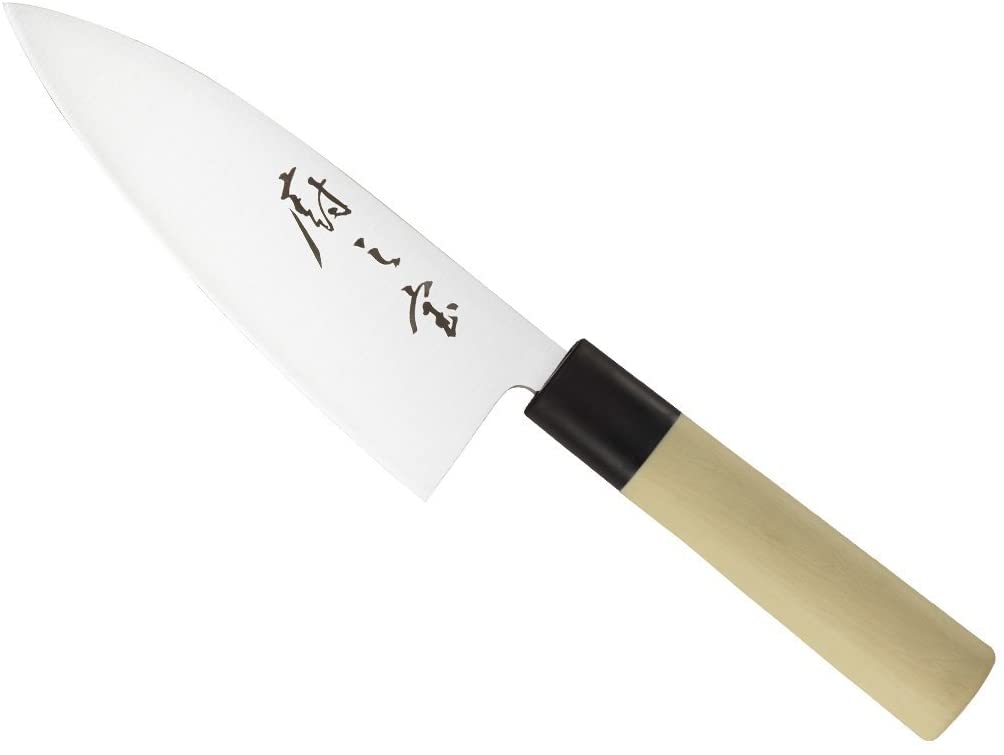
The Deba knife made in Japan is designed for cutting and filleting fish.
The Deba is a heavy knife used to filet whole fish and cut through the cartilage and bones of fish.
The heft of the Deba knife allows it to cut through the heads and bones of a fish, and it’s a smaller pointed tip to fillet the flesh from the bones.
The Deba can be used for chicken and meat but is not recommended for cutting through large bones.
The Handle of the Deba knife is lightweight and ergonomically welds to the hand for seamless use.
Deba knives are known for thick, wide blades and sharp edges to strengthen them to chop through a fish, chicken, and also filleting task.
The tapered blade and strong handle of the Deba bring a point of balance that is cantered at the heel of the blade, and this results in the substantial knife feeling far easier than expected.
HONESUKI KNIFE USE
- Honesuki is referred to as the boning knife used for cutting meat off the bone, deboning poultry and cutting through soft joints.
- Honesuki is referred as debone in Japanese, it has a pointed tip, thin spin and triangular for carcasses poultry and filleting fish.
- Honesuki can also be used to cut through join of a bird, but not through the bone.
HONESUKI VS DEBA

The Honesuki knife has a triangular shape blade with a pointed tip design while the Deba knife has a thick, wide blade.
The Honesuki and Deba knives are easy to sharpen maintain, well and strong enough to perform their tasks.
The Honesuki knife is a great knife for parting out poultry and also deboned meat into accessible pieces while Deba is designed more for filleting fish.
Most Hankotsu knives have a unique edge with some similarity to the single-sided edge found on a Deba knife.
The Deba spin is thicker than the Honesuki.
The blade of the Honesuki is lighter and thinner while Deba has a wide and heavy blade.
In terms of design, the Honesuki knife has a triangular-shaped blade with a clip-point while the Deba knife has a smaller pointed tip design.
The Honesuki has a suitable design for the de-boning process and cutting chicken, while the Deba thin and heavier blade has a good durable edge, suitable for cutting a fish, and also for filleting tasks.
The Honesuki and Deba knives both have comfortable handles with regular grip and non-slip.
Honesuki knives can be single or double bevel and they vary quite a bit in weight and thickness of the blade while A Deba is more designed for fish and anything else that needs filleting.
READ ALSO: BEST CUTTING BOARD FOR JAPANESE KNIVES
READ ALSO: BREAKING KNIFE VS CIMETER
HONESUKI VS PETTY
Honesuki is designed to separate, trim and cut off the meat of the bone while Petty is designed for food preparation.
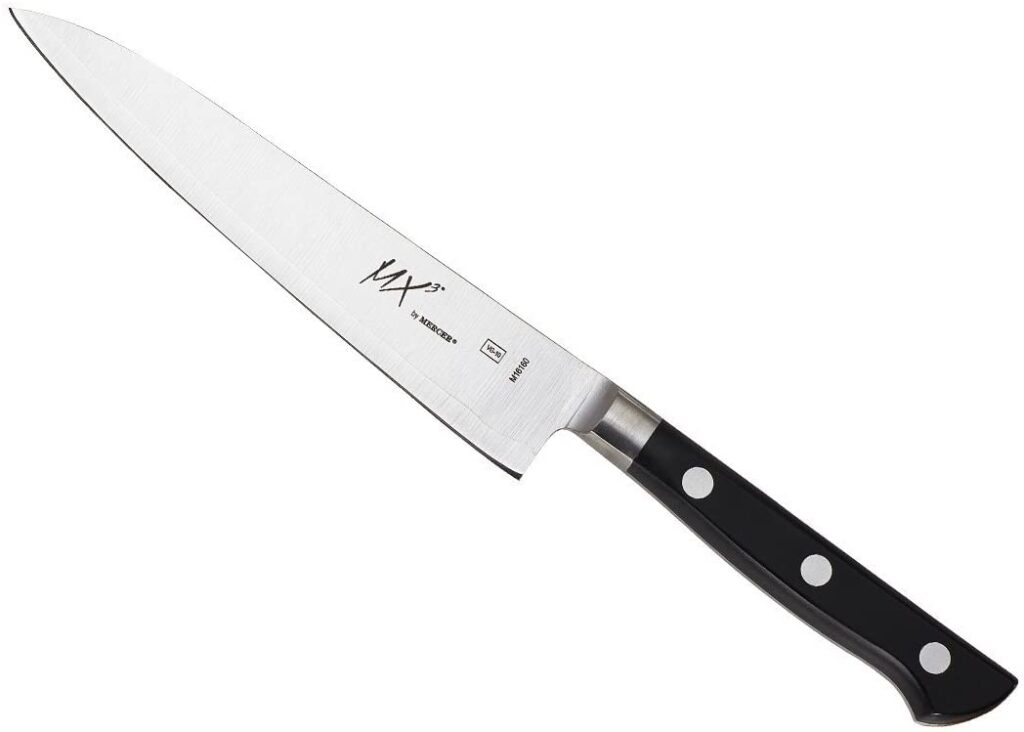
The blade length of the Honesuki ranges from 5.5 inches to 7 inches while the Petty blade length ranges from 6 inches to 8 inches.
The Petty knife is thinner and lighter than the Honesuki.
A petty knife is a Japanese utility knife while Honesuki is a Japanese boning knife.
HANKOTSU
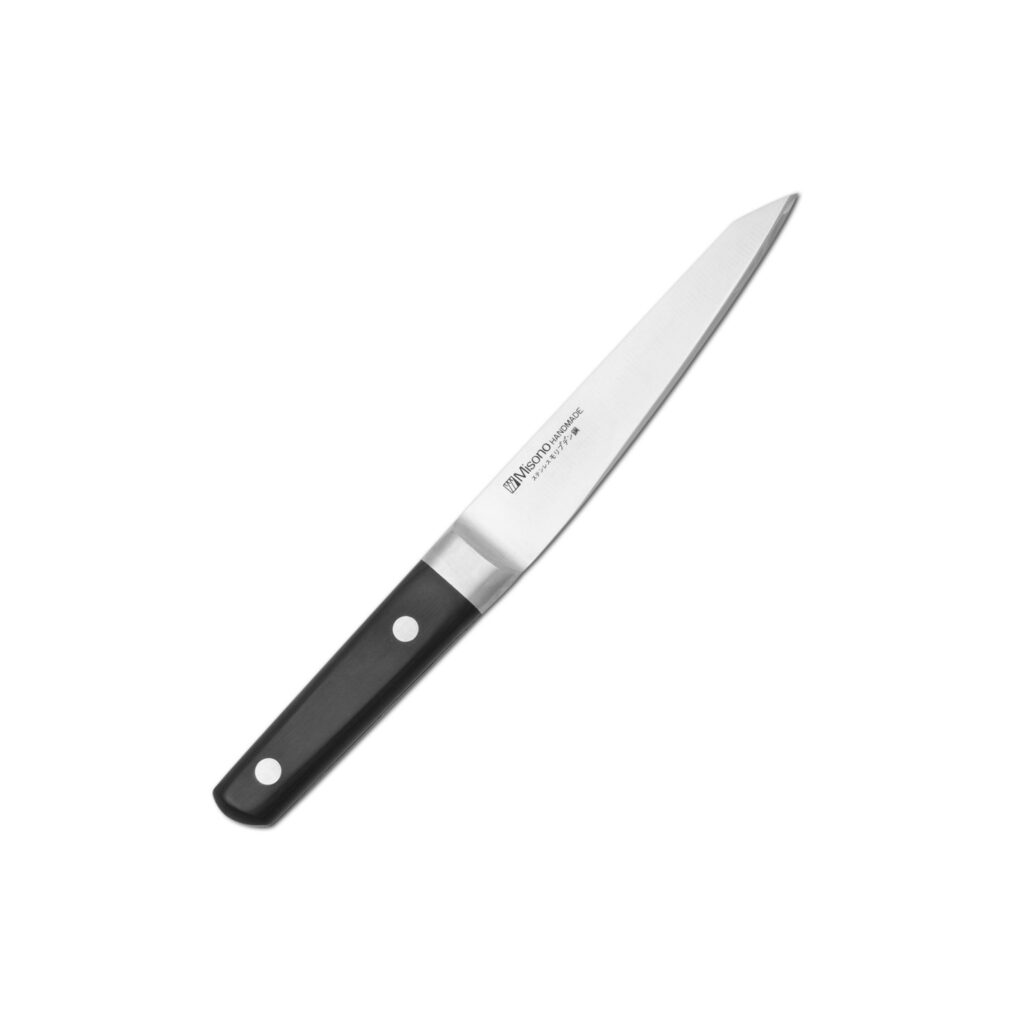
Hankotsu knife is a designed strong Japanese knife used for cutting and separating meat from bones but should not be used on bone.
It is actually a butcher knife but works just as well for sectioning meat and poultry in the home kitchen.
The Hankotsu knife feels great in hand when getting when slicing through cartilage.
Hankotsu knives can be found in stainless steel or high carbon steel.
Hankotsu knives are both right-handed and left-handed.
GARASUKI KNIFE
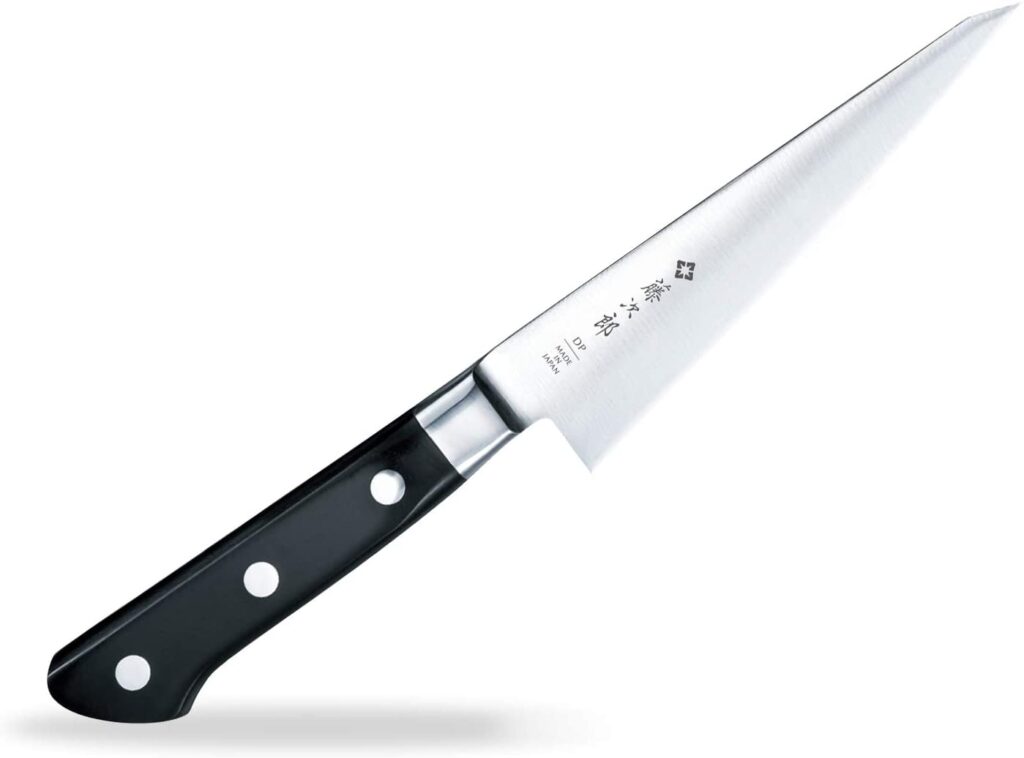
The Garasuki knife originated in Japan and it is designed to cut and break down a whole chicken.
The Garasuki knife is much like the Honesuki knife and they share the same blade.
The Garasuki knife has an extremely sharp pointed tip that is reminiscent of a beak; clean strokes of the blade can separate poultry and meat from the bone resulting in beautiful filets.
With a spine that increases in thickness towards the heel of the blade, extra heft and balance allow the blade to cut through joints and cartilage for perfect butchering.
The Garasuki is a heavy traditional Japanese boning knife for poultry. The Garasuki knife is becoming one of the most sought new tools for cooks and chefs because of its sharp tip strength to cut and pierce the skin in tight space.
HONESUKI VS BONING KNIFE
Honesuki knife is designed for poultry and small animal while Boning knives are designed to cut meat, poultry, and fish away from any bones without splintering them for food preparation.
Honesuki and boning knives share little difference and a lot of similarities when comparing them, you will see that they are both suitable for going through large meat.
Compare to the boning knife, the Honesuki knife is a better one for cutting and separating poultry.
Example of a good Boning knife;
BONING KNIFE
No knife set is complete without a boning knife. Boning knives will help you easily remove the fat from meat. They are versatile.
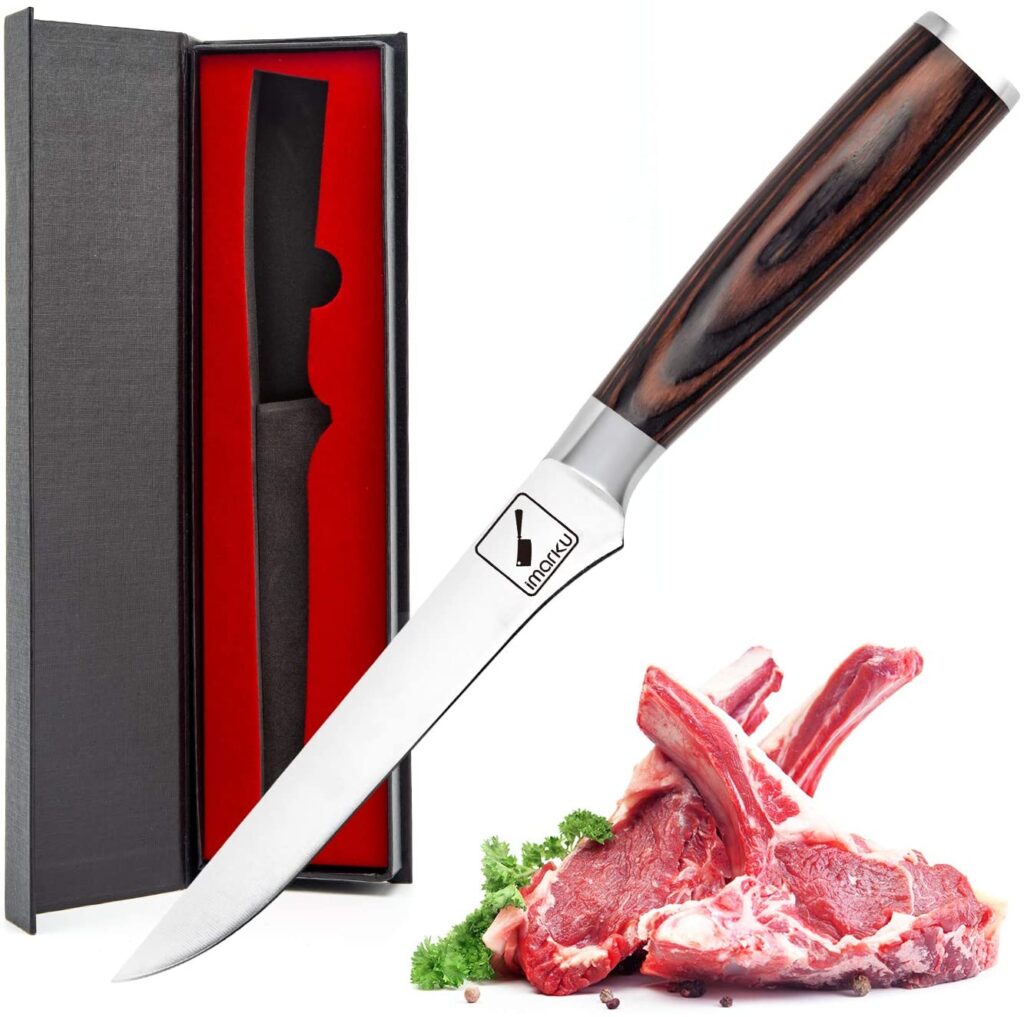
This Boning Knife is made of high-carbon German stainless steel to provide maximum sharpness, edge retention, and corrosion resistance. It is properly balanced to allow precise close-to-bone slicing.
The exceptionally strong and durable blade ensures efficient de-boning, preparing, filleting, skinning, trimming, and butterflying.
The ergonomically designed and polished Pakkawood handle is durable, non-slip, easy to clean, comfortable, and very beautiful.
The ergonomic handle is made by Pakkawood, The material is highly waterproof, very dense, and durable. Pakka wood is a good choice for knife handle material.
Your knuckle is protected as the plan of boning blade gives sufficient clearance for use without knuckle interference. The fit and finish of this knife are impeccable.
The handle helps keep the blade resting comfortably in your supporting finger.
To maintain this Boning knife, hand washing is recommended to rinse and clean the knife thoroughly with a soft cloth. Dishwashing is not recommended as it may damage the precise- cutting edge.
READ ALSO: HONESUKI VS PETTY
- Carbon Steel Pans for Wood Fired Oven - March 22, 2025
- Cookware for Wood Fired Oven - March 21, 2025
- Cast Iron Dutch Oven Pros and Cons - March 19, 2025